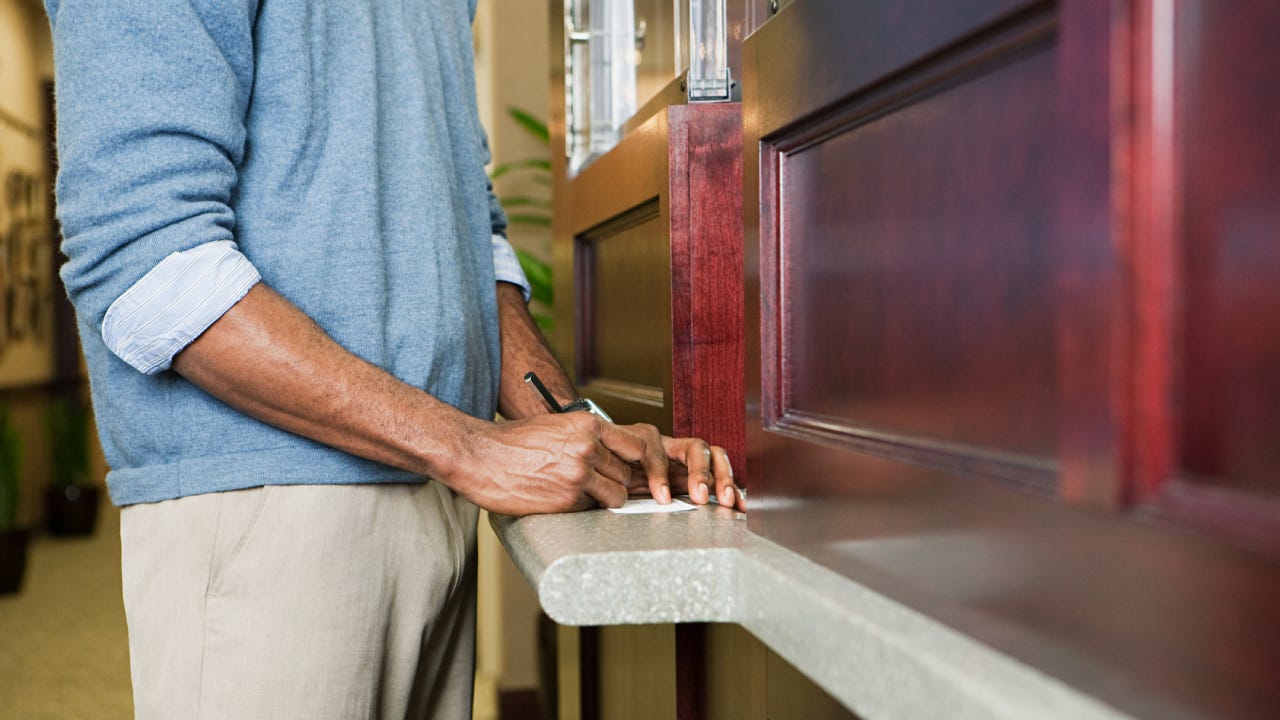Guide to checking account terminology

A checking account is a cornerstone of your personal finances. It’s commonly used to receive direct deposit of paychecks, pay bills, make debit card transactions and withdraw cash. While a savings account may be where you store money for emergencies or financial goals, money moves in and out of your checking account frequently.
Understanding how a checking account works can help you maintain a proper balance and avoid various bank fees. Here we’ll explain common checking account terms and concepts.
Bounced check
A bounced check — also called a rubber check — happens when you’ve written a check and don’t have enough funds in your account to cover it. If you’ve written someone such a check and they deposit it at their bank, their bank sends it back to you — the account holder — and your bank may charge you a fee for having non-sufficient funds (NSF).
Many banks offer overdraft protection to help customers avoid non-sufficient funds and overdraft fees. When you use overdraft protection to link a savings account to your checking account, the bank will automatically transfer funds from the savings account to prevent the checking account from being overdrawn. This saves you the fees and hassle associated with a bounced check.
Canceled check
When someone deposits or cashes a check you’ve written, the cleared check has been processed by the bank and is now considered canceled. The money becomes deducted from your checking account balance. A canceled check cannot be reused.
A check can also be canceled before being cashed or deposited. If you contact your bank to request a check be canceled (also known as putting a stop payment on a check), no one can cash the check, and the funds won’t be withdrawn from your account. The bank can only cancel a check that hasn’t yet been cashed. Your bank may charge a $25 to $35 fee for a request to cancel a check.
Certified check
A certified check is a personal check that the account holder’s bank has verified contains sufficient funds and bears a legitimate signature. A mark or stamp indicates the check is certified. A certified check can come in handy when buying something from a seller who wants proof the check won’t bounce.
Not all banks provide check certification services — cashier’s checks and money orders are more common. Those that do often charge a fee of around $15 to $20.
Check clearing
A check you’ve written clears when the funds successfully move from your account to the bank account of the person depositing the check. A check may clear the same day the recipient deposits or cashes it, or it can take up to several days.
If you don’t have enough money in your account to cover a check you’ve written, the check bounces.
Check floating
In banking, “float” refers to money that temporarily shows up in the bank accounts of both the check writer and the check recipient. This means the money is briefly double-counted until the payer’s bank clears the check.
Check floating involves taking advantage of this float period by writing a check for which you don’t currently have sufficient funds, believing there will be funds in the account by the time the recipient’s bank processes the check.
For example, let’s say that a person’s paycheck is directly deposited on Friday. But they give someone a check on Thursday that they lack adequate funds to cover. By doing so, they’re gambling on the bank not clearing the check until after their paycheck has appeared in their account.
Check kiting
Check kiting is another form of taking advantage of the float. It is the illegal act of knowingly writing a check from an account with insufficient funds and depositing the check into another bank account. The person then withdraws the money from the second bank account before the check has cleared.
Check kiting is a type of bank fraud punishable under federal and state laws.
Check hold
A check hold is the amount of time a bank can withhold funds deposited by check before crediting the customer’s account. Typically, the customer cannot access some or all of the funds until the hold ends and the check clears.
The Federal Reserve allows banks to hold checks for a “reasonable period of time,” which generally means:
- Up to two business days for a same-bank check
- Up to six business days for a check drawn on a different bank
For deposits greater than $5,000, a bank must make the initial $5,000 available under its general check deposit policies, but it can place a hold on the amount above $5,000.
A bank can also place a check hold on the entire amount under certain circumstances, such as:
- The account owner has overdrawn multiple times in the past six months
- The bank has reason to doubt the check’s validity
- The customer is re-depositing the check
- The account receiving the check has been open for less than 30 days
- There is an emergency beyond the bank’s control, such as a natural disaster
Outstanding check
An outstanding check is one you’ve written that hasn’t been cashed or deposited yet. Until the check has cleared, your bank will still include the funds in your balance. As such, it’s important to track your true available balance to avoid spending the money earmarked for the check and possibly overdrawing your account.
Substitute check
A substitute check is a digital reproduction of a paper check. The Check Clearing for the 21st Century Act, which went into effect in 2004, made it legal for banks to use substitute checks when collecting funds from other banks. Substitute checks enable banks to process checks more quickly and cheaply than when handling and transporting paper checks.
Bottom line
Knowing the various terms and concepts associated with checking accounts can help you manage your money smoothly and keep your balance in the black.
For instance, knowledge of bounced checks — and how to avoid them — can help save you the charges associated with overdrafts and non-sufficient funds. Understanding your bank’s procedures regarding check holds and checks clearing can also ensure you know when deposited funds are available and plan your expenses accordingly.






